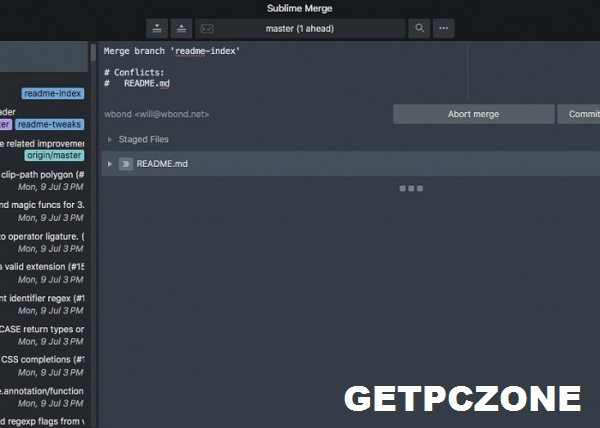

- #Sublime merge cmdlone install#
- #Sublime merge cmdlone update#
- #Sublime merge cmdlone verification#
- #Sublime merge cmdlone code#
- #Sublime merge cmdlone license#
In the Plugins window type Cursive and then install it, finally restart the IDE, you’ll be good to go for the next section. Type Shift Shift then type Plugins then Enter or you can go to File > Settings.
#Sublime merge cmdlone code#
If you don’t have IntelliJ installed, just grab a version, the community version is free and works fine with Cursive, otherwise just follow the steps for VS Code below. Since I’m from the Java world, I’m used to IntelliJ and the Cursive plugin for Clojure development. This is why I will cover both IntelliJ and VSCode in this guide.

Obviously I cannot explain how every IDE / text editor works with Clojure, I’m not a Emacs or Atom user, I do use mainly IntelliJ, but I’ve used VSCode extensively also.Īs with the Linux distribution, you can chose to use the editor you like most, like Emacs, or Vim + fireplace or Vim + vim-iced, or Atom + Chlorine, or Sublime or any other you can find. Now that Clojure is installed, let’s write some code using your IDE and the REPL integration. Leiningen 2.9.1 on Java 11.0.5 OpenJDK 64-Bit Server VM IDE
#Sublime merge cmdlone update#
MacOSįirst update your brew, then install Clojure CLI, and verify that it works:

But for your project just stick with one of the alternative, don’t try to mix the two.Įdit: I’ve just found this article What are the clojure tools which goes into more details regarding how the Clojure CLI & ps actually work, so read it later if you need to know more about it. Nevertheless it helps knowing how Leiningen works because you’ll find a lot of projects using it. In this guide I will cover ps, and we’ll also install Leiningen so that you have it on your system when you need to, and because I’ve never used Boot myself even if I’ve heard good things about it, you can try it if you want.įrom my point of view you should start with ps because I feel like the community is really invested in it right now, and they are building some cool stuff. I agree with you, humble imaginary visitor. Hey I’m new to Clojure and you want me to make a choice? Seriously? There are different Clojure tools that you can use to build your project. OpenJDK 64-Bit Server VM (build 11.0.5+10-post-Ubuntu-0ubuntu1.118.04, mixed mode, sharing ) Clojure Tooling
#Sublime merge cmdlone license#
Note: Sublime Merge may be downloaded and evaluated for free, however a license must be purchased for continued use.OpenJDK Runtime Environment (build 11.0.5+10-post-Ubuntu-0ubuntu1.118.04 )
#Sublime merge cmdlone verification#

Apply patches using the application menu or command palette. Patches: Easily create and apply patches using the commit and file context menus.Make it yours with an adaptable layout and powerful theming system.Looking for a commit? Use find-as-you-type search to find the exact commit you're looking for.View the exact Git commands you're using, and seamlessly transition between the command line and Sublime Merge. When you're using Sublime Merge, you're using Git.With over 40 supported languages out of the box, and automatic loading of installed third-party syntaxes, we've got you covered. With the power of Sublime Text syntax highlighting, you can understand exactly what's been changed in a commit.Select one or more lines to split hunks into multiple changes. Commit exactly what you want with line-by-line and hunk staging.With a zippy cross-platform GUI toolkit, an unmatched syntax highlighting engine, and a custom high-performance Git reading library, Sublime Merge sets the bar for performance.


 0 kommentar(er)
0 kommentar(er)
